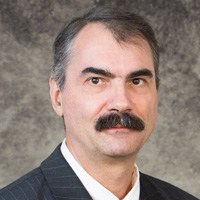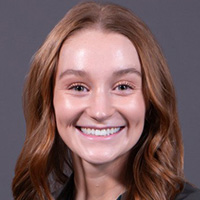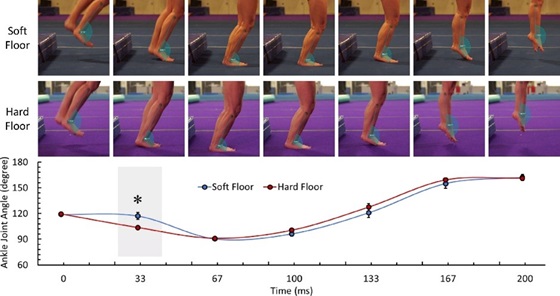- Membership & Community
-
Publications & News
- Journals
-
Newsroom
-
The Physiologist Magazine
- 2019
- 2020
- 2021
- 2022
- 2023
- 2024
- In Depth
-
Mentoring Forum
- Net Worth
- Take Care
- You … In Charge
- Work. It. Out.
- Working Off-site
- Location, Location, Location?
- Student Support
- Progressing to Postdoc
- Relationship Building
- Let’s Get It Started
- What Do We Value?
- It’s a Postdoc Life
- Coronavirus Contributions
- Creative Communications
- Selection Process
- Conference Connections
- Postdoc Appreciation
- Research Rewards
- Focus on Teaching
- Industry Insights
- Balance Beam
- Post Postdoc
- If You Build It
- Talk It Through
- Forward Bound
- I’ve Earned My PhD. Now What?
- University Life
- Tips for Trainees
- Time Travel
- Prepare Now for the Career You Want
- Policy IQ
- Publish with Polish
- Under the Microscope
- Mentoring Q&A
- The Physiologist Magazine Readers Survey
- Evolution
- Baseline by Scott Steen, CAE, FASAE
- Find Us on Social Media
-
The Physiologist Magazine
-
Professional Development
-
Meetings & Events
-
American Physiology Summit
- #APS2024 Overview
- Abstracts
- Awards at the Summit
- Award Lectures
- Career Networking Lunch Form
- Dates and Deadlines
- Hotel Information
- Industry Partners
- Keynote Speaker—Brian Kobilka, MD
- Keynote Speaker—Jessica Meir, PhD
- Mobile App
- NIH and NSF Program Officer Panel Discussion Form
- Off-site Summit Meetups
- Physical Poster Information
- PhysioHub
- Pre-Summit Events
- Registration
- Section & Group Banquet Tickets
- Speaker Audiovisual Instructions
- Summit FAQs
- Summit Newsroom
- Summit Store
- Travel & Transportation
- Undergraduate Program Book
- Liability Waiver
- Summit Call for Proposals
- Industry Partners
- Martin Frank Diversity Travel Award Orientation Agenda
- Martin Frank Diversity Travel Award Networking Luncheon Agenda
- Women in Physiology Networking Event Agenda
-
2023
- APS 2023 Call for Proposals
- Shocklogic Test
- Team 2023 Task Force
- Shaping the Summit
- Schedule at a Glance
- Pre-Summit Events
- Pre-Summit Center for Physiology Education Workshop Registration
- Section & Groups Banquet Tickets
- Summit Store
- Pre-Summit Center for Physiology Education Workshop
- Press Registration
- Meet the Organizers
- Keynote Speaker—Terrie Williams, PhD
- Keynote Speaker—David Julius, PhD
- Industry Workshop Information
- Important Dates and Deadlines
- Hotel Information
- Game Changers
- Distinguished Lecturers
- Building APS 2023
- Awards at the Summit
- 2023 Summit Information
- American Physiology Summit Program
- 2023 Summit Newsroom
- 2024
- Scientific Integrity Policy
- Integrative Physiology of Exercise Conference
- From Concept to Classroom
- Webinars
- Related Meetings
- Future APS Conferences
-
Past APS Conferences
- APS Institute on Teaching and Learning
- Integrative Physiology of Exercise
- Seventeenth International Conference on Endothelin (ET-17)
- New Trends in Sex and Gender Medicine
- APS Institute on Teaching and Learning (2022)
- Control of Renal Function in Health and Disease Conference
- Comparative Physiology: From Organisms to Omics in an Uncertain World
- Conference Policies
-
American Physiology Summit
- Awards
-
Career & Professional Development
-
Career Gateway
-
Resources
- Transcript—Leading Through Conflict and Difficult Conversations
- Transcript—Managing Conflict with Colleagues
- Transcript—Leading a Team Through Conflict
- Transcript—Providing Difficult Feedback
- Transcript—Team Dynamics and Culture Primer
- Transcript—Building a Team
- Transcript—Leading a Team Assigned to You
- Transcript—Creating a Team Culture
-
Resources
- Career Navigator
- Center for Physiology Education
- Job Board
- Mentoring
- APS Graduate Physiology & Biomedical Science Catalog
-
Career Gateway
-
Meetings & Events
-
Advocacy & Resources
- Policy Areas
-
Resources
- Researcher Resources
- Educator Resources
- Trainee Resources
- Student Resources
-
APS Graduate Physiology & Biomedical Science Catalog
- Augusta University
- Des Moines University
- East Tennessee State University
- George Washington University
- Louisiana State University Health Sciences Center Shreveport
- Mayo Clinic Graduate School of Biomedical Sciences—Biomedical Engineering & Physiology
- Medical College of Wisconsin
- Michigan State University
- New York Medical College
- Nova Southeastern University
- Pennsylvania State University
- Saint Louis University
- Texas A&M University
- Texas A&M University Medical Physiology
- Stony Brook University
- The University of Iowa
- The University of Mississippi Medical Center
- University of Alabama at Birmingham
- University at Buffalo
- University of Colorado
- University of Delaware
- University of Florida
- University of Louisville
- University of Michigan
- University of Minnesota
- University of Missouri-Biomedical Sciences
- University of Nebraska Medical Center
- University of Oregon
- University of South Carolina School of Medicine
- University of Tennessee Health Science Center (UTHSC)
- University of Texas Health Science Center
- Virginia Commonwealth University
- Wayne State University
- Wake Forest University
- Physiology Department Catalog Submission Form
- Career Gateway
- Diversity, Equity & Inclusion
- Advocacy
- About APS
Achilles tendon rupture more likely when floors ‘give’ less


Long Beach, Calif. (April 5, 2024)—Gymnasts who compete on stiffer floors than their training floors have a higher risk of experiencing an Achilles tendon rupture due to the positioning of their ankles, according to new research from the Burrell College of Osteopathic Medicine in New Mexico. Researchers will present their work this week at the American Physiology Summit in Long Beach, California. The Summit is the flagship annual meeting of the American Physiological Society (APS).
The Achilles tendon runs from the back of the heel up to the calf. Achilles tendon injuries, particularly ruptures where the tendon tears from too much strain, are common in the sport of gymnastics. Gymnasts who have competed for 10 years or more have a higher risk of developing Achilles tendon ruptures due to repeated microtrauma to the tendon, which weakens it. One of the causes of microtrauma in the Achilles tendon is overstretching. Overstretching can happen when the angle between the foot and the shin becomes too small during dorsiflexion (imagine pointing the toes up toward the sky). An Achilles tendon rupture usually requires surgical repair and recovery time ranging from six months to a year.
The research team invited more than 100 female college gymnasts to complete a survey about their experiences with Achilles tendon injury. The gymnasts—from 78 different colleges—answered questions that included whether they became injured at training or competition sites, where floor stiffness may differ.
Approximately 20% of the respondents had sustained an Achilles tendon rupture, and they were 23 times more likely to have been injured on a competition floor versus a training floor. Competition floors tend to be newer and stiffer than training floors, which affects how athletes land on their feet. On a softer practice floor, the gymnasts’ toes dig into the floor upon landing. There is less dorsiflexion in the ankles, which creates a larger angle between the foot and the shin. On a stiffer or harder floor, the toes are not able to grasp the floor as much, which creates more dorsiflexion and a smaller angle.

“If gymnasts would train on newer (stiffer) floors, their musculoskeletal systems [could] adapt to these conditions and [would] not suddenly experience greater Achilles tendon strain during competition on stiffer floors,” co-author Emily Muhlenhaupt said.
However, regular access to harder floors for training is not always possible. The researchers are investigating solutions that may help minimize the risk of Achilles tendon ruptures when practicing on softer surfaces.
“Our wish is that our research contributes to the safety of the sport and that administrators or professional organizations adopt performance standards for gymnastics floor equipment that would help to prevent injuries in gymnastics,” co-author Harald M. Stauss, MD, PhD, said.
NOTE TO JOURNALISTS: The American Physiology Summit will be held April 4–7, 2024, in Long Beach, California. To schedule an interview with the researchers, conference organizers or presenters, or to request abstract 1843, “Stiffer gymnastics floors result in more dorsiflexed ankles, potentially increasing the risk for Achilles tendon rupture,” contact APS Media Relations or call 301.634.7314. Find more highlights from the meeting in our Summit Newsroom.
Physiology is a broad area of scientific inquiry that focuses on how molecules, cells, tissues and organs function in health and disease. The American Physiological Society connects a global, multidisciplinary community of more than 10,000 biomedical scientists and educators as part of its mission to advance scientific discovery, understand life and improve health. The Society drives collaboration and spotlights scientific discoveries through its 16 scholarly journals and programming that support researchers and educators in their work.
Related Content
- Heat Stress May Affect the Muscles for Longer Than We Think
- Study Reveals How Obesity Could Accelerate Aging in the Brain
- Passive Stretch before Cardio Protects Blood Vessel Health
- American Physiological Society Announces 2023 Award Recipients
- New American Physiological Society Leaders Take Office
- American Physiological Society to Launch Subscribe to Open Model for Research Journals
- Study Bolsters Evidence that Effects of Puberty Blockers Are Reversible
Contact Us
For questions, comments or to share your story ideas, email us or call 301.634.7314.

